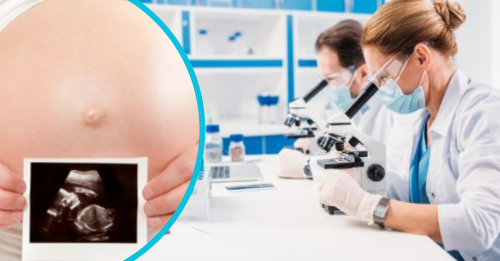Biologists have conducted successful experiments, the result of which has proven that self-fertilization is possible.

British biologists have created a full-fledged embryo for the first time, bypassing the phase of fertilization of the egg and its fusion with the sperm, TSN writes.
Thus, it simplifies the cloning process in the future, according to the Nature Communications article.
"Our work challenges the almost 150-year-old dogma that only the fertilization of an egg by a sperm leads to the formation of a full-fledged embryo and the birth of healthy offspring. Previously, we thought that only the egg could 'reprogram' the sperm so that the normal development of the embryo began," said microbiologist Tony Perry from the University of Bath in the UK.
According to research, it was possible to find out that living beings, such as lizards, chickens, fish or insects, are capable of parthenogenesis – self-fertilization, in which two eggs fuse with each other to form an embryo, or the female gamete begins to develop, despite the "half" set of chromosomes. For mammals, this method of reproduction is not at all characteristic, and there is not a single species of animal that would be capable of this, even in theory.
According to Perry, attempts to artificially induce parthenogenesis were carried out in early 2000, when scientists tried to "deceive" the egg chemically and force it to "start" the embryo's development program by adding a solution of strontium chloride to the nutrient medium.
Then it turned out that such a trick is likely, but such "half" embryos, which scientists call parthenogenots, inevitably die after several cycles of division.
That is why scientists have decided that eggs have unique properties and mechanisms that allow them to start the process of giving birth to a new life and merging the paternal and maternal "halves" of DNA, cleaning them from the so-called epigenetic marks, which are critically important for the development of the embryo.
Now it turns out that this is not the case. In the course of experiments, microbiologists have discovered that they can "reprogram" spermatozoa and even the blanks of male gametes, make them suitable for fusion with the "half" DNA of parthenogenot and continue development in the form of a full-fledged embryo.
The scientists said that this process was completed successfully and healthy mice were born in 24%, which is a very high chance of success in the cloning procedure.
Mice that were born in this way did not differ from the "normal" offspring of rodents and had a similar mass, size, intelligence and could successfully reproduce, giving healthy offspring when crossed with each other or with "ordinary" individuals of the opposite sex.

Their only difference from "natural" mice was how often their genes were "read" – parthenogenesis.
The success of this experiment paves the way for the creation of technologies for "self-fertilization" of humans, which are of interest to physicians because they allow obtaining "pure" lines of embryonic stem cells, without causing ethical problems associated with the destruction of viable embryos. In addition, parthenogenesis could help scientists uncover the genetic roots of rare diseases more quickly, creating animals with genomes made up of identical halves.
See also: Size still matters: scientists about the most intimate part of the body of men
Do you want to keep abreast of the latest events from the region and beyond? Subscribe to the Telegram channel "Voice of the Carpathians" and be the first to receive the latest information every day!
